Alu wadi stuffed with prawn mince is a delicious culinary eccentricity peculiar to a Mumbai community of under 8,000
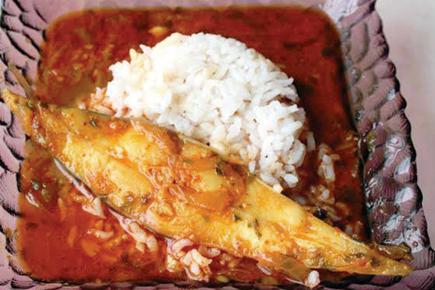
Sarangyache Bhujne
We are at the Oshiwara residence of Soumitra Velkar, a manager at a life insurance firm
who reminds us that cooking is his first love. He is telling us about a quirky tradition among
the Pathare Prabhus, who lay claim to being the original inhabitants of Mumbai, along with the Kolis.
ADVERTISEMENT
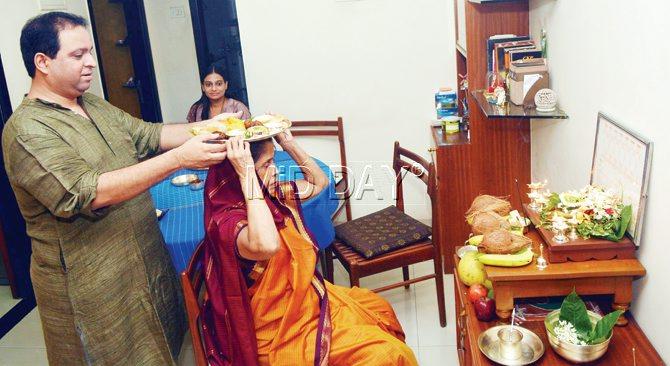
On the last day of Shravan, mothers of the Pathare Prabhu community present edible gifts to newcomers in their families. Pics/ Sayed Sameer Abedi
Tracing their ancestry to King Ashwapati (circa 700 BC), they travelled south from Gujarat, ultimately choosing to make Bombay their home in 13th century AD. To welcome members into the family, Velkar’s mother, Surabhee, crafts elaborate edible besan treats to gift them on the last day of Shravan. These are shaped like peacocks, hens or even cartoon characters.
Velkar suddenly says, “Aai, please fetch our copy of Gruhani Mitra.”
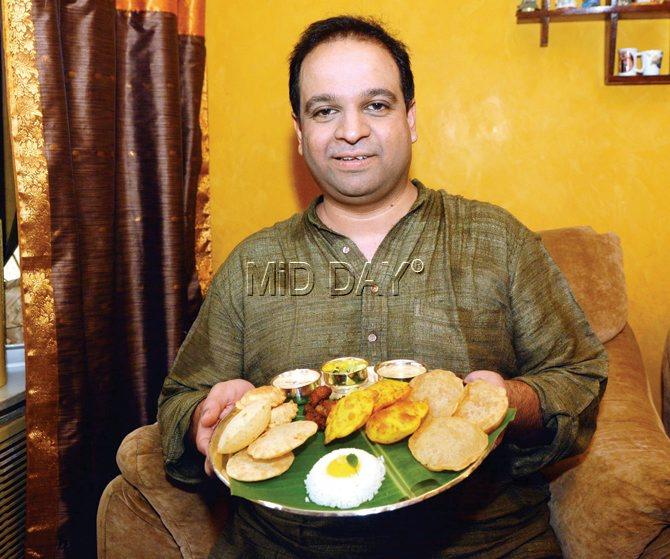
Soumitra Velkar holds a thali of vegetarian fare, prepared for a puja on the last day of the month of Shravan
Surabhee reaches for a tattered and well-thumbed book written by Lakshmibai Dhurandhar, published in 1910. A panel after the preface shows Lakshmibai dressed in Maharashtrian finery, with a conspicuous pearl-laden nath as she looks away from the camera. Having written down nothing less than 1,000 recipes, she comes across as the veritable Julia Child of Pathare Prabhus (commonly abbreviated to PPs). She discusses how to prepare fish and mutton curries as well as meringues, puddings and pies.
Until some decades ago, Gruhani Mitra (‘the homemaker’s friend’), was routinely gifted to Pathare Prabhu brides.

Manoj Vasaikar (below) serves a vegetarian bhanavla at his London restaurant Indian Zilla 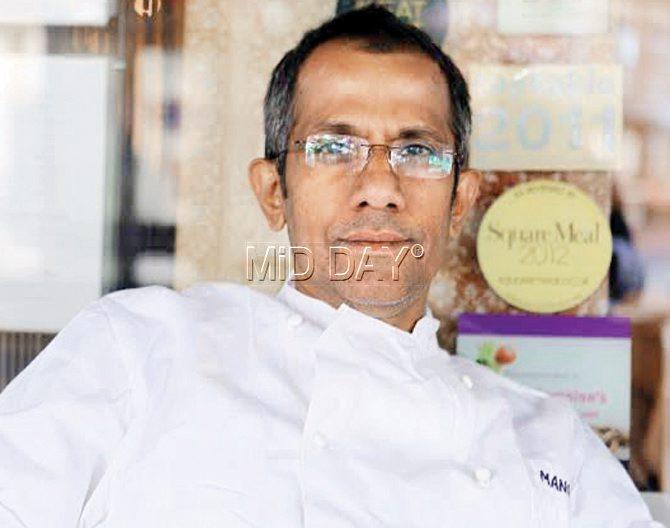
Velkar, 38, who has preserved the book as if it were a holy text, goes to it often. He belongs to a community, now under 8,000 in number, that included lawyers and bankers employed by the East India Company and residing in bungalows in Girgaum, Khar and Dadar. Their fish curries used well-sized meaty fish, like ghol and rawas, while the smaller sardine and mandeli were reserved for their domestic helps. Not much has changed, except perhaps that the PPs now savour mandeli too.
Although known for their distinct culinary heritage, the PPs have no commercial establishment in the city that serves their fare, unlike the Parsis. “We have always been in traditional, clerical jobs. A loaded lot, we never thought of setting up a restaurant,” says Velkar, who like other home chefs, has been hosting pop-up dinners at his home for the last three years.
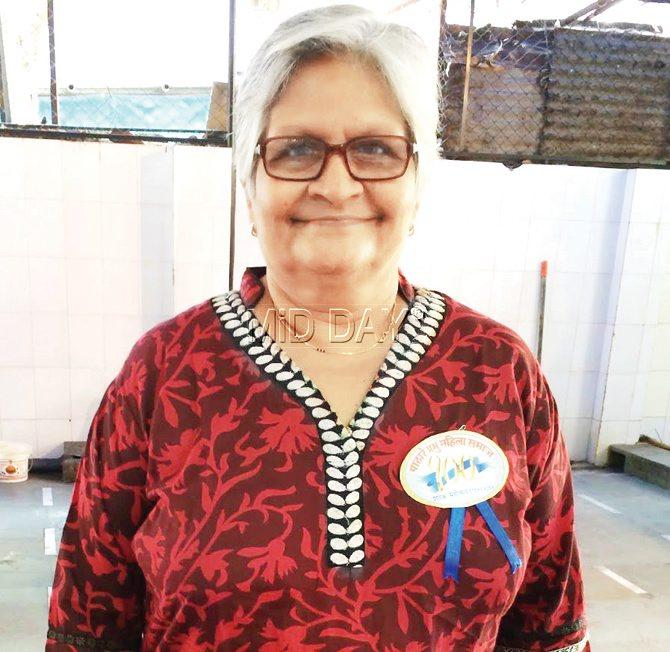
Bimba Nayak
“Earlier, the only way you could savour this food was if you were invited to a Pathare Prabhu home,” says Prabhadevi resident Bimba Nayak, chef and expert baker. She understands the Pathare Prabhus as a cosmopolitan community; having lived alongside the English and French, their cuisine reflects techniques that are unusual to Maharashtrian cooking, including braising and baking.
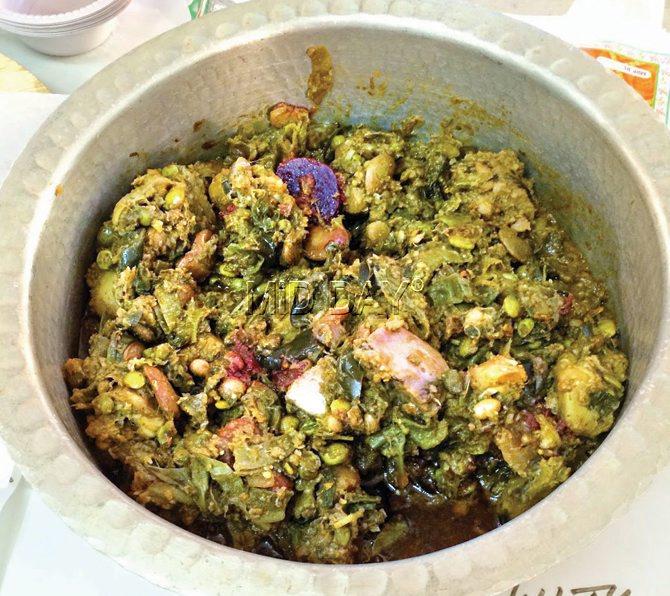
Like the Gujarati undhiyu, ghada is made from vegetables, but has added prawns
Nayak, who earlier lived at Opera House, recalls summer vacations spent making homemade bread — what they call pao. As children, she and her siblings would fetch bags of sand from Girgaum Chowpatty to bake little bowls of fermented dough. “The pao was treated with great care. When the little mounds would be covered with blankets for rising, we had to respect them. No running around them; and menstruating women kept away.” Rooms choked with the smutty smell of yeast was a common memory.
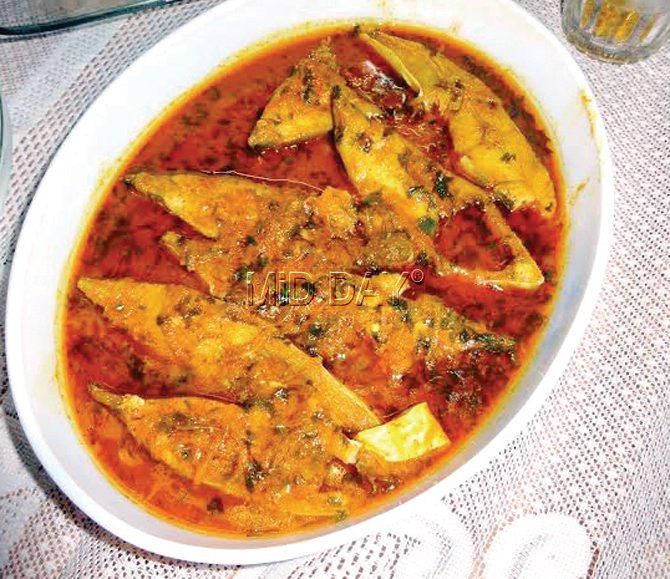
Pomfret khadkhadla made by Nayak. Pics/SASSY FORK
Pao wasn’t had with spicy kheema; rather, torn bits were dipped into luscious mango pulp. Nayak, who has been sharing PP recipes with young chefs, says, “The general rule of our cuisine is mellowing by mixing. Hence, spicy colocasia leaves (alu) stuffed with a prawn mince are paired with a light coconut milk broth, called sheer. Or, take for instance, a mutton curry that is had alongside a light sheer with onions and potatoes.”
Voracious pescatarians, the Pathare Prabhus treat their fish differently from the Kolis and Malvanis. “PPs are choosy about their fish, and we hardly use any coconut,” explains Velkar. He quickly clarifies, “We do use coconut milk, though.” Depending on the kind of fish on hand, you have two types of curries — khadkhadle (usually made with shell fish) and bhujne (white meat fish).
But, curry is a strong word to use for Pathare Prabhu concoctions. “No dish is overpowering. We have stews and broths, really; the sauces are thin and refined,” says chef Manoj Vasaikar, who runs three Indian restaurants in London and owes his Pathare Prabhu tastebuds to his mother, who hails from Girgaum. At Indian Zilla, Vasaikar’s selection of starters has a version of shepherd’s pie, called bhanavla, widely prepared by the Mumbai Pathare Prabhus too.
While the Mumbai bhanavla has prawns, Vasaikar’s version is like a vegetarian quiche, served with mint chutney and garnished with pomegranate seeds. His other favourite at the restaurant is jeera khari with PP prawn pickle as dip. “Preparation time is just a matter of minutes in Pathare Prabhu cuisine. Their use of light masalas is a welcome change from the heavy masalas used otherwise,” he says.
Not the usual sambhar
On the subject of masalas, the PPs can’t do without sambhar. Although it shares its name with the South Indian vegetable broth, it’s light years away, and is a key ingredient in curries, including khadkhadle. Like the East Indian bottle masala, sambhar is what you get when you roast and grind anywhere between 21-30 ingredients to make a stock that lasts the year. These are like fingerprints; every family uses a varying number of ingredients, lending different shades to the sambhar — some are cinnamon coloured and some, a deeper espresso brown. The Ajunkiya sambhar is different from the Vijayakar sambhar, for instance.
Velkar makes his own batch, three-and-a- half kilos to be exact, based on his grandmother’s recipe. Nayak sources the potent powder from her aunt. Gruhani Mitra also lists an elaborate number of ingredients. The only commercially sold sambhar masala available in Mumbai is by Kirtikar Masala, a shop in Girgaum.
Kunal Vijayakar, food expert and TV host, who belongs to the community, says that the future of the indigenous cuisine looks bleak. They have no restaurants and the youth aren’t inclined towards preparing traditional fare. “The last two years have thankfully seen a revived interest in our cuisine, thanks to online communities and blogs.” For those of you keen on tasting the irresistible wonders of PP cuisine, you have three options — follow the online recipes, visit the Pathare Prabhu Food Fest that takes place in Khar every January, or just make friends with a Pathare Prabhu.
Pathare Prabhu online:
>> Soumitra Velkar’s blog, The Prawnickles of Velkar, at soumitravelkar. wordpress.com
>> Kalpana Talpade’s YouTube videos
>> Monica Deshpande’s blog, varan-bhaat.com
>> Pathare Prabhu Foodies group on Facebook
Umber
Ingredients
>> 2 ripe Rajeli bananas (plantains)
>> 2 tbsp powdered sugar
>> 1 tbsp rice flour
>> 1 generous pinch of cardamom and nutmeg powders
>> Ghee, for frying
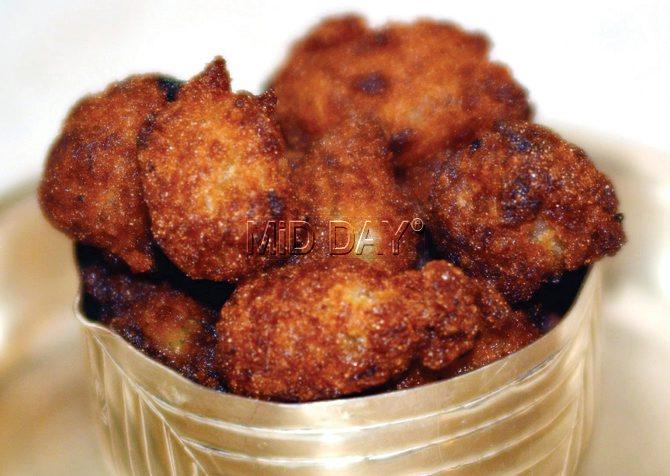
Method
>> Grate the Rajeli bananas and mix all remaining ingredients into the mash. Let the batter rest for 30 minutes to an hour
>> Deep-fry spoonfuls of batter in ghee over medium flame till the fritters are evenly browned on all sides. If you do this over a high flame, they may colour quickly and not turn crisp all the way through
>> Serve hot/cold. Pairs wonderfully with vanilla ice-cream
Sarangyache Bhujne
Ingredients
>> 1 finely chopped onion
>> 2 tbsp crushed garlic
>> 1 finely chopped green chilli
>> Chopped coriander
>> Turmeric powder
>> Red chilli powder
>> 3 tbsp oil
>> 1 pomfret, cut in slices

Pic/ Manju Velekar
Method
>> In a pan, mix the chopped onion, crushed garlic, salt to taste, green chilli, chopped coriander, turmeric, chilli powder and oil
>> Crush these together till the entire mix is a homogeneous paste. This is critical; if you don’t mix the ingredients together sufficiently, the resultant curry will be a runny mess rather than the perfect gel it ought to be
>> Coat the pomfret pieces well with this paste
>> Add just enough water to cover the fish pieces (around 1/2 cup) and being this to a boil on a medium flame
>> As soon as the curry starts bubbling, turn down the heat, cover, and cook the mix on a slow flame for around 4-5 minutes
 Subscribe today by clicking the link and stay updated with the latest news!" Click here!
Subscribe today by clicking the link and stay updated with the latest news!" Click here!








